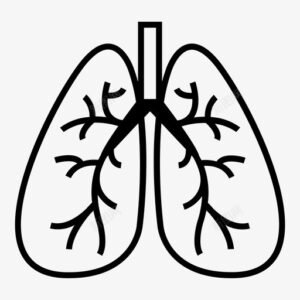كبسولة نيراباريب 尼拉帕利
Niraparib (الاسم التجاري في هونغ كونغ: Zele) هو مثبط جزيء صغير بولي (ADP-ribose) PARP1/2 فعال للغاية وانتقائي يتم تناوله مرة واحدة يوميًا لعلاج سرطان المبيض المتكرر في المراحل المتأخرة. يمكن أن يؤدي علاج الصيانة إلى إطالة فترة بقاء المرضى الذين يعانون من سرطان المبيض المتقدم بشكل كبير وتقليل تكرار الإصابة بسرطان المبيض.
Niraparib was approved by the FDA in the United States in March 2017 and was approved in Europe in November of the same year for the treatment of patients with recurrent epithelial ovarian cancer, fallopian tube cancer, or primary peritoneal cancer who have achieved complete or partial response to platinum-containing chemotherapy. Maintenance treatment. Based on approvals in the United States and Europe, Zele (niraparib) was approved for listing in Hong Kong in October 2018.
PARP inhibitors (PARPi) are drugs based on precision treatment of ovarian cancer and are also a major breakthrough in the history of ovarian cancer treatment. Currently, three PARP inhibitors (niraparib, olaparib, and rucaparib) have been approved for the treatment of ovarian cancer in the world. Among them, niraparib is the first to be approved in the United States without testing for BRCA. Maintenance therapy with PARP inhibitors.
The results of the study show that compared with placebo, the use of niraparib maintenance during the “chemotherapy interval” has miraculous effects regardless of whether the patient has a BRCA germline mutation:
(1) In gBRCA mutation-negative patients, the risk of disease progression was reduced by 55% and PFS was extended to more than 2 times (9.3 months vs. 3.9 months);
(2) There is a more significant effect in gBRCA mutation-positive patients, with the risk of disease progression reduced by 73% and PFS extended to nearly 4 times (21 months vs. 5.5 months). This suggests that BRCA mutation is a favorable factor for the benefit of niraparib treatment. Compared with olaparib and rucaparib, this study is more comprehensive.
(3) The effect was also significant in gBRCA mutation-negative but HRD-positive patients, with the risk of disease progression reduced by 70% and PFS prolonged by more than 3 times (12.9 months vs. 3.8 months).
Although three PARP inhibitors (niraparib, olaparib, and rucaparib) are all approved by the US FDA for the maintenance treatment of recurrent ovarian cancer, there are certain differences between the three PARP inhibitors:
(1) The three PARP inhibitors have different pharmacological and pharmacokinetic properties. Niraparib has a bioavailability of up to 73% and a longer human half-life (36 hours). It shows better anti-tumor activity due to high exposure in tumor tissues; at the same time, due to the special metabolic pathway of niraparib, it is difficult to take other drugs No drug dose adjustments are required for niraparib.
(2) Patients’ convenience and compliance with medication are different. Niraparib is taken once a day, which is very convenient for clinical application and has high patient compliance. Olaparib and rukaparib generally need to be taken 2 to 3 times a day. Moreover, patients with ovarian cancer do not need to undergo BRCA gene testing when taking niraparib. Patients can obtain curative effects regardless of whether they have BRCA gene mutations.
(3) Medication safety varies among patients. The results of the PRIMA study of niraparib as maintenance treatment after first-line chemotherapy showed that if the initial dose was 200 mg once a day in patients weighing less than 77 kg, the hematological toxicity was significantly reduced without affecting the drug efficacy. Individualized dosing of niraparib based on body weight and/or platelet count may reduce the incidence of hematological treatment-emergent adverse events.





























